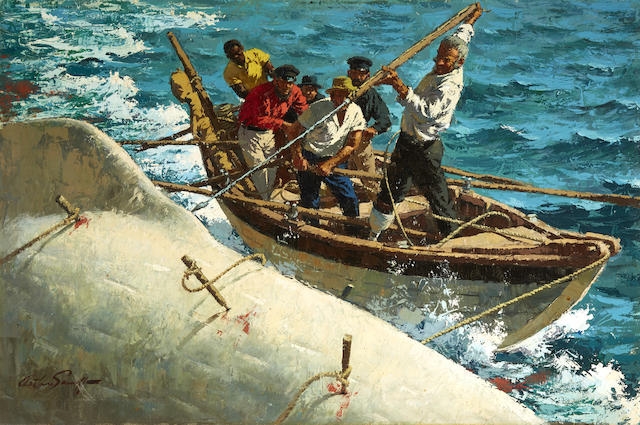Willi Bauer, (German, b. 1923)
Harbor Scene
Oil on canvas
27 x 31 inches (68.6 x 78.7 cm)
Private collection
Willi Bauer is a contemporary German painter known for his Impressionist-styled depictions of garden parties and rustic villages. Born on July 7, 1923 in Spessart, Germany, Bauer studied at the Staedel College of Fine Art in Frankfurt under the artist Della Villa. In the spirit of German painters like Otto Eduard Pippel, Bauer often painted people in flower markets and outdoor cafés in a style that his dealer Herbet Arnot describes as, “very laid back and calming.” His paintings can be found in many private collections worldwide. Now retired, Bauer lives in Germany. More on Willi Bauer
Please visit my other blogs: Art
Collector, Mythology, Marine
Art, Portrait of a Lady, The
Orientalist, Art of the Nude and The Canals of
Venice, And visit my Boards on Pinterest
Images are copyright of their
respective owners, assignees or others. Some Images may be subject to copyright
I don't own any of these images -
credit is always given when due unless it is unknown to me. if I post your
images without your permission, please tell me.
I do not sell art, art prints, framed
posters or reproductions. Ads are shown only to compensate the hosting
expenses.
If you enjoyed this post, please share
with friends and family.
Thank you for visiting my blog and also
for liking its posts and pages.













